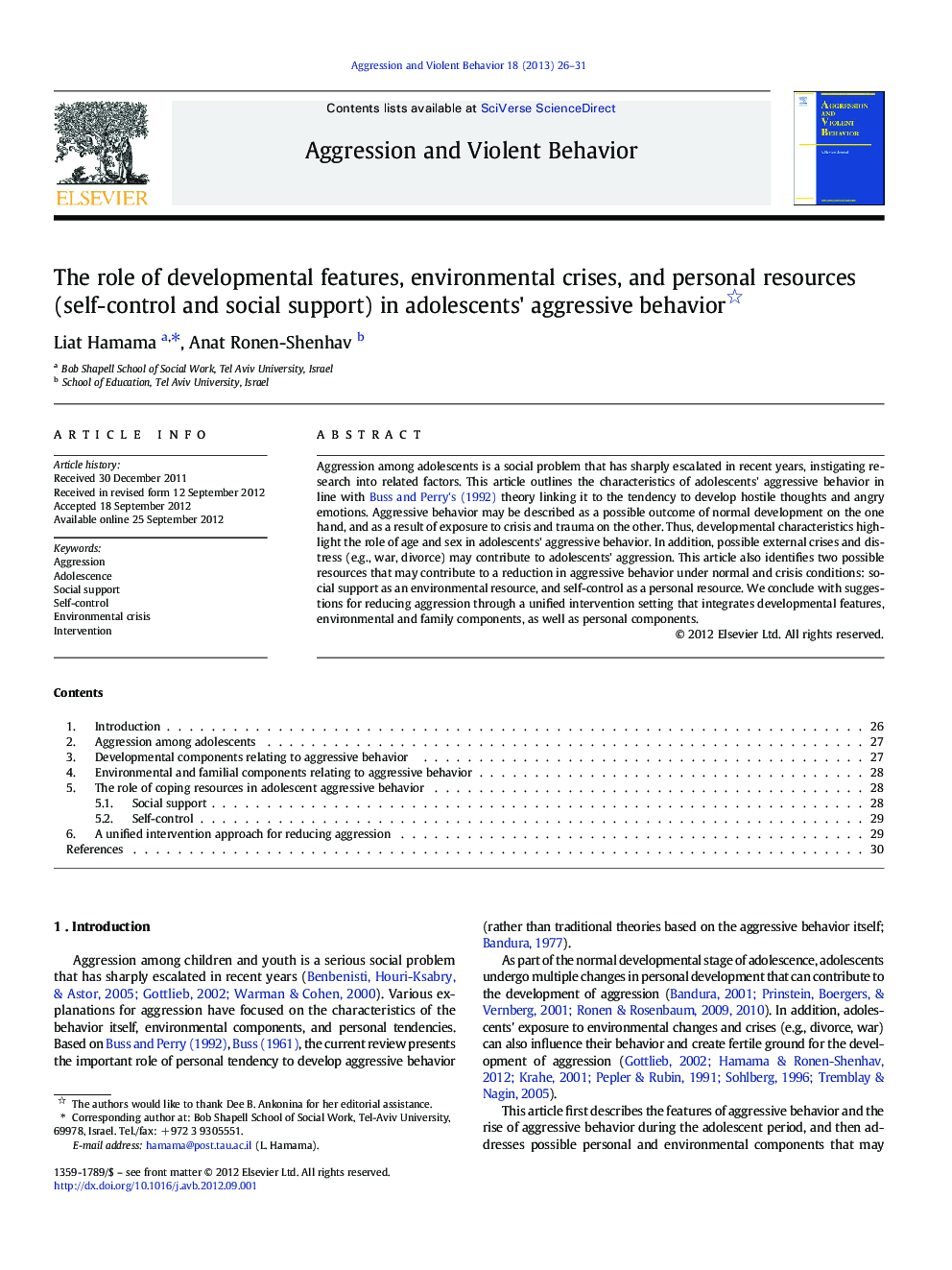| Article ID | Journal | Published Year | Pages | File Type |
|---|---|---|---|---|
| 94631 | Aggression and Violent Behavior | 2013 | 6 Pages |
Aggression among adolescents is a social problem that has sharply escalated in recent years, instigating research into related factors. This article outlines the characteristics of adolescents' aggressive behavior in line with Buss and Perry's (1992) theory linking it to the tendency to develop hostile thoughts and angry emotions. Aggressive behavior may be described as a possible outcome of normal development on the one hand, and as a result of exposure to crisis and trauma on the other. Thus, developmental characteristics highlight the role of age and sex in adolescents' aggressive behavior. In addition, possible external crises and distress (e.g., war, divorce) may contribute to adolescents' aggression. This article also identifies two possible resources that may contribute to a reduction in aggressive behavior under normal and crisis conditions: social support as an environmental resource, and self-control as a personal resource. We conclude with suggestions for reducing aggression through a unified intervention setting that integrates developmental features, environmental and family components, as well as personal components.
